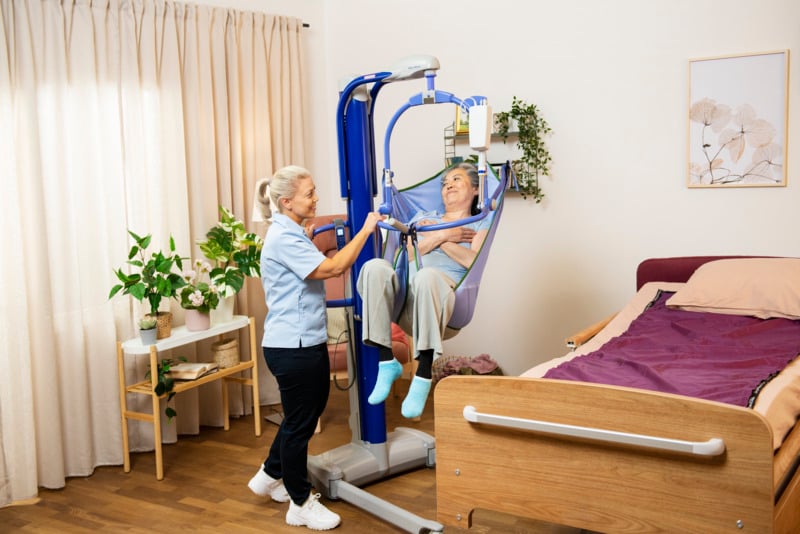Reducing caregiver injuries in long-term care: How to build a safer handling strategy
The safety of caregivers in long-term care facilities is directly tied to the quality of resident care. Yet, for employees who provided direct patient care, 59% of the injuries were attributed to patient-handling activities such as repositioning, transferring, preventing a fall and assisting a resident during a procedure.1

These injuries not only drive up costs and turnover but also compromise resident outcomes and operational efficiency.
For decision-makers evaluating solutions, the question is no longer if you should act—but how to implement a safer handling strategy that delivers measurable results.
1. Understand the true cost of inaction
Caregiver injuries are more than a staffing issue—they’re a financial and reputational risk. Each injury can result in:
- Lost workdays and overtime costs
- Increased workers’ compensation claims
- Higher turnover and recruitment expenses
- Reduced morale and care quality
Facilities that fail to address these risks often face a cycle of burnout, staffing shortages, and compromised care delivery.
2. Build a strategy around proven outcomes
Leading LTC providers are shifting from reactive to proactive strategies by investing in outcome-based programs like Arjo MOVE®, which guarantees:
- 60% reduction in caregiver injuries
- 40% reduction in pressure injuries
- 30% reduction in resident falls
This program combines clinical consulting, risk mapping, and equipment implementation to create a safer, more efficient care environment.
3. Equip your staff for success
A safer handling strategy starts with the right tools. Consider these high-impact solutions:
Floor and Ceiling Lifts
- Maxi Move® 5 floor lift and Maxi Sky® 2 ceiling lift reduce strain during transfers and repositioning.
- Designed for ergonomic use, they support residents up to 600 lbs and improve infection control with non-porous components.
Sit-to-Stand Devices
- Sara® Flex and Sara® Stedy enable single-caregiver operation while promoting resident dignity and independence.
- DSDC-accredited designs support dementia-friendly care environments.
Therapeutic Seating for Complex Needs
- Atlanta™ is designed for individuals with involuntary movements and advanced dementia.
- Integrated tilt, recline, and leg rest support secure positioning and lower limb edema management.
- Tool-free adjustability and infection-control design promote safe, efficient use in demanding care environments.
4. Align equipment with clinical and operational goals
When selecting equipment, consider:
- Injury prevention: Devices that reduce manual handling lower injury rates and improve staff retention.
- Resident dignity: Smooth, respectful transfers enhance the care experience.
- Infection control: Features like welded seams and antimicrobial covers support hygiene protocols.
- Training and adoption: Choose solutions that are intuitive and supported by clinical education.
5. Consider flexible financing and rental options
Budget constraints shouldn’t delay safety improvements. Programs like Arjo Subscribe offer:
- Capital equipment bundled with service, training, and consumables
- Flexible 3–5 year terms
- The ability to scale up or down as needs evolve
Rental solutions also provide access to top-tier equipment without upfront capital investment, supported by Arjo’s nationwide service network.
Safety as a strategic advantage
Reducing caregiver injuries isn’t just about compliance, it’s about creating a resilient, high-performing care environment. By investing in the right equipment, training, and outcome-based partnerships, LTC leaders can protect their staff, elevate resident care, and strengthen their bottom line.
Download the long-term care brochure
Explore our full portfolio of solutions for nursing homes and assisted living communities.
Talk to an Arjo expert
Ready to address these challenges in your facility? Connect with an Arjo representative to explore tailored solutions.
Reference:
- Totzkay, DL. "Multifactorial Strategies for Sustaining Safe Patient Handling and Mobility". Crit Care Nurs Q, 2018. 41(3): p. 340-344